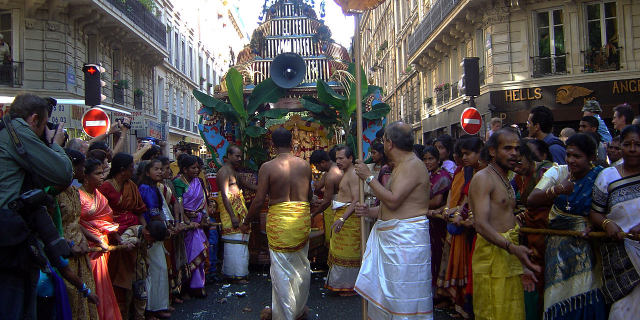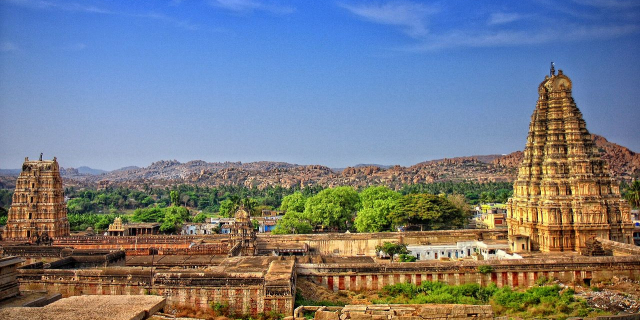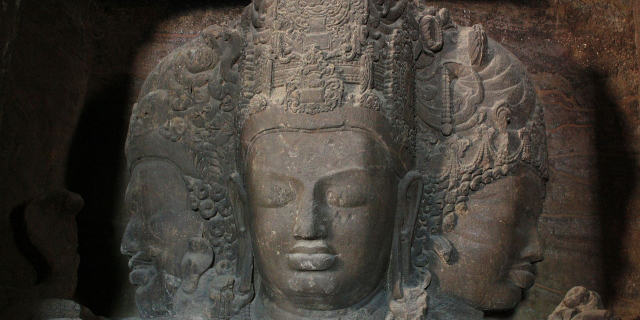Tamils
Context of Tamils
The Tamil people, also known as Tamilar (Tamil: தமிழர், romanized: Tamiḻar, pronounced [t̪amiɻaɾ] in the singular or தமிழர்கள், Tamiḻarkaḷ, [t̪amiɻaɾɡaɭ] in the plural), or simply Tamils (), are a Dravidian ethno-linguistic group who trace their ancestry mainly to India’s southern state of Tamil Nadu, union territory of Puduc...Read more
The Tamil people, also known as Tamilar (Tamil: தமிழர், romanized: Tamiḻar, pronounced [t̪amiɻaɾ] in the singular or தமிழர்கள், Tamiḻarkaḷ, [t̪amiɻaɾɡaɭ] in the plural), or simply Tamils (), are a Dravidian ethno-linguistic group who trace their ancestry mainly to India’s southern state of Tamil Nadu, union territory of Puducherry and to Sri Lanka. People who speak Tamil and are born in Tamil clans are considered Tamils. Tamils constitute 5.9% of the population in India (concentrated mainly in Tamil Nadu and Puducherry), 15% in Sri Lanka (excluding Sri Lankan Moors), 7% in Malaysia, and 5% in Singapore.
From the 4th century BCE, urbanisation and mercantile activity along the western and eastern coasts of what is today Kerala and Tamil Nadu led to the development of four large Tamil empires, the Cheras, Cholas, Pandyas, and Pallavas and a number of smaller states, all of whom were warring amongst themselves for dominance. The Jaffna Kingdom, inhabited by Sri Lankan Tamils, was once one of the strongest kingdoms of Sri Lanka and controlled much of the north of the island.
Tamils were noted for their influence on regional trade throughout the Indian Ocean. Artefacts marking the presence of Roman traders demonstrate that direct trade was active between Ancient Rome and Southern India, and the Pandyas were recorded as having sent at least two embassies directly to the Roman Emperor Augustus in Rome. The Pandyas and Cholas were historically active in Sri Lanka. The Chola dynasty successfully invaded several areas in southeast Asia, including the powerful Srivijaya and the city-state of Kedah. Medieval Tamil guilds and trading organizations like the Ayyavole and Manigramam played an important role in Southeast Asian trading networks. Pallava traders and religious leaders travelled to Southeast Asia and played an important role in the cultural Indianisation of the region. Scripts brought by Tamil traders to Southeast Asia, like the Grantha and Pallava scripts, induced the development of many Southeast Asian scripts such as Khmer, Javanese, Kawi, Baybayin, and Thai.
The Tamil language is one of the world's longest-surviving classical languages, with a history dating back to 300 BCE. Tamil literature is dominated by poetry, especially Sangam literature, which is composed of poems composed between 300 BCE and 300 CE. The most important Tamil author was the poet and philosopher Thiruvalluvar, who wrote the Tirukkuṛaḷ, a group of treatises on ethics, politics, love and morality widely considered the greatest work of Tamil literature. Tamil visual art is dominated by stylized Temple architecture in major centres and the productions of images of deities in stone and bronze. Chola bronzes, especially the Nataraja sculptures of the Chola period, have become notable symbols of Hinduism. A major part of Tamil performing arts is its classical form of dance, the Bharatanatyam, whereas the popular forms are known as Koothu. Classical Tamil music is dominated by the Carnatic genre, while gaana and dappan koothu are also popular genres. Tamil is an official language in Sri Lanka and Singapore. In 2004, Tamil was the first of six to be designated as a classical language of India.
Although most Tamil people are Hindus (Shaivism), many follow a particular way of religious practice that is considered to be the Ancient Tamil religion, venerating a plethora of village deities and Ancient Tamil Gods. A smaller number are Christians and Muslims, and a small Jain community survives from the classical period as well. Tamil cuisine is informed by varied vegetarian and non-vegetarian items, usually spiced with locally available spices. The music, the temple architecture, and the stylized sculptures favoured by the Tamil people as in their ancient nation are still being learnt and practised. English historian and broadcaster Michael Wood called the Tamils the last surviving classical civilization on Earth, because the Tamils have preserved substantial elements of their past regarding belief, culture, music, and literature despite the influence of globalization.





























